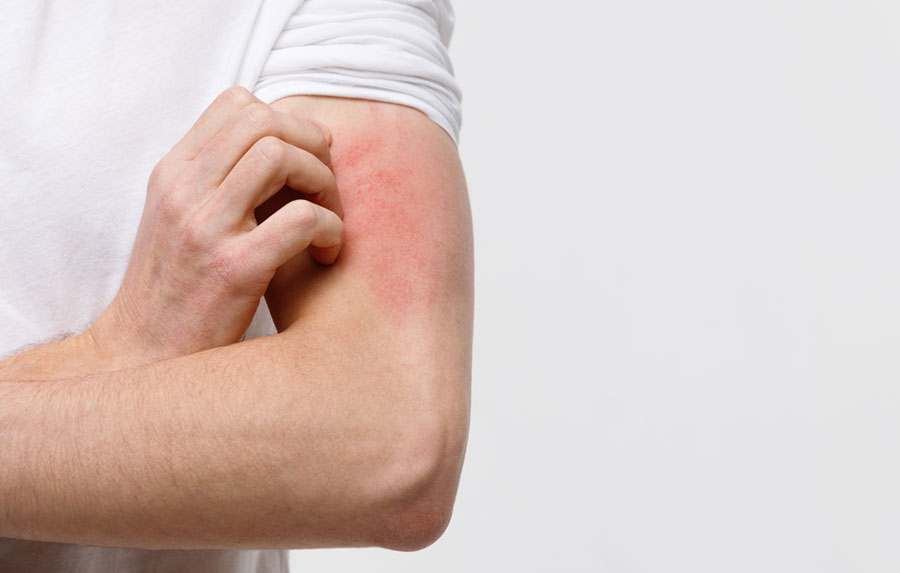
What are allergic skin diseases?
Allergic dermatitis is caused when a patient who has already become sensitive to an allergen comes in contact with it again. The result is an image of dermatitis in the area, accompanied by itching. These are delayed-type hypersensitivity reactions, which are often confused with irritative dermatitis and differ in both their pathogenetic mechanism and their treatment. Common allergens that cause the reaction are metals (nickel, chromium, cobalt, gold, etc.), topical antibiotics, perfumes, preservatives, ivy and many other allergens.
What is urticaria?
Urticaria is a vascular reaction of the skin due to the mass degranulation of mast cells, resulting in the release of histamine. This reaction can spread to other organs, threatening vital systemic functions. The characteristic dermatological picture shows multiple blisters (red patches on the skin) and is accompanied by intense itching. Transmitters tend to disappear within 24 hours and reappear in the same or other places. Urticaria can be due to medication, infections, food, autoimmune diseases, natural causes (pressure, heat, sunlight) parasitism, but most of the time it is idiopathic.
Treatment of allergic skin diseases
Getting a detailed medical history as well as a physical examination is important for differential diagnosis and effective treatment. To detect the responsible substances that cause allergic contact skin diseases, special skin tests (Patch test) are performed. Treatment requires the removal of the causative agent, where possible, as well as medication.
Our Contacts
Contact us!
Agias Sofias 28, Thessaloniki
info@dermaesthetichair.gr
(+30) 2310 282.292 & 2310 250.300

